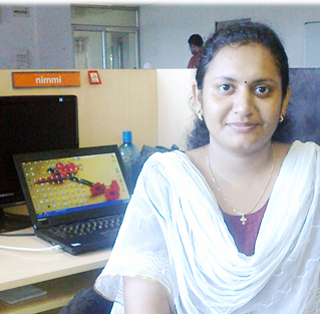What is Content Management System?
A Content Management System is a tool which allows a various & variety of centralized and de-centralized staffing to create, edit, manage and finally publish various types of content such as text, graphics, video, documents etc.
CMS supports or allows the creation, management, distribution, publishing, and discovery of corporate information. It covers the various lifecycle of the pages on your site i.e. from providing simple tools to create/manage the content, tools for publishing the content and finally archiving. It sometimes also provides the ability of managing the structure of the site, the appearance of the published pages, and the navigation provided to the users.
There are a wide variety of business benefits which can be achieved by implementing a CMS. Few examples are;
– Improved & increase site navigation & site flexibility.
– Greater consistency and streamlined authoring process
– Support faster turnaround times for pages
– Increase security and reduce duplication of information
– Integrate with Social Media
– Easy to Monetize & greater capacity for growth and reduce site maintenance cost.
A Small Case study;
Some years ago, a software developer working in a company used to have personal web page space and to add the pages he had to use a tool called “GBuilder”. GBuilder allows anyone to create a web page from a template and put it up on our Web server but it didn’t require any knowledge on HTML and you could build a page quickly and effortlessly.
The same company after this saw that this could be useful within an organization. For example if a Public relation department needs to get a press release up on the Website, often it has to go through numerous steps like; Writing the release and getting it approved followed by Send the release out on the wire and then Send the release to the Web group. After this the Web group converts the document to HTML and puts it on the Website. Larger companies have some sort of staging server where Web documents sit until they are pushed live and if a press release has sensitive information then it can’t be released to the Web group until it has been sent to the wire but often upper management wants it on the Website immediately
Thus such situation causes a lot of stress for both the Web group and the Public Relation team. It would be a lot easier if the Public relation team could post the release to the Web at the same time that they post it to the wire services. But often they don’t know HTML or don’t have access to the Web site and so this is where a content management system comes into play.
When do we need to use Content Management System (CMS)?
Websites need content management if;
– There is a lot of content (1,000 pages plus)
– There is a high velocity of content change (a change a day or more)
– If the content needs to change quickly (needs to be live in minutes or hours, not days or weeks)
– If there are a lot of content contributors (20+), or if the company needs to have an archive of previous versions of the site for regulatory or legal reasons
Simple Guidelines on why we choose a perfect CMS:
1. Determine the purpose of the Content Management System and what we expect to gain from it. Choose your CMS based on your site’s primary function for example; if blogging is the main focus of your site then use a blog platform and if images and video are the main focus then choose a CMS that either has great support for media built-in or has great plug-in for enabling those functions. Also if your site is going to focus on an online store then the platform you choose needs to be able to seamlessly integrate that online store without a extra work.
2.Figure out what functionality you require from the CMS i.e. some CMS platforms have limited plug-ins, so the list of typical features of some of the CMS platforms can be Captcha, Tag Clouds, Polls, Ratings, Wysiwyg Editor, Forums and Gallery.
3. It is quite advisable to choose particular CMS that is easy-to-use and highly customizable as per business requirement of online portal market player. On the other hand, the CMS should so perfect that provides complete flexibility which led to great accessibility.
4. A good CMS comes with multiple websites and languages support which a person can easily target different markets without any language issue as most people go for online CMS to create, edit, manage, delete as well as organize web pages.
5. One of the major advantages of choosing a CMS is that it simplifies the updating and management of a website. So the pages it produces should also be simple and shouldn’t be a lot of extra code for unused functionality in the final page code. All that serves to do is slow the load times for the page and increase the likelihood that something will render wrong or throw an error.
6. Select the CMS that best suits you and always check how easy it is to move your website to another host without retaining the ability to edit your own web site. Some CMS products are dependent on you hosting your web site with a specific hosting company, if you ever need to move your web site you may need to have a whole new website design done for you.
7. Try to figure out how your website and CMS content is protected and what happens if there is a problem with the server that hosts your web site. Does the company provide backups and does this backup also cover a full restore of your web site if something goes wrong, or does it just restore the CMS but not your content.
Some common advantages of a CMS:
– Decentralized maintenance i.e. based on a common web browser. Editing anywhere, anytime removes bottlenecks.
– People with average knowledge of word processing can create the content directly. No HTML knowledge needed.
– The Users are assigned some roles and permissions which prevent them from editing content that they are not authorized to change.
– Central storage system which allows the content to be reused in many places on the website and formatted for any device (web browser, mobile phone/WAP, PDA, print).
– Dynamic content encourages faster updates, generates accountability for authored content (logs) and cooperation between authors.
– Content scheduling and content publication can be time-controlled and sometimes hidden for later use or require user login with password.
References;
- http://www.noupe.com/php/choosing-cms-tips.html
- http://ezinearticles.com/?Tips-to-Choose-Right-Content-Management-System-%28CMS%29-for-Your-Project&id=5130581
- http://growthspur.wordpress.com/2010/01/21/tips-for-picking-a-content-management-system-for-your-site/
Thanks,
Pinaki Mohapatra
Mindfire Solutions












